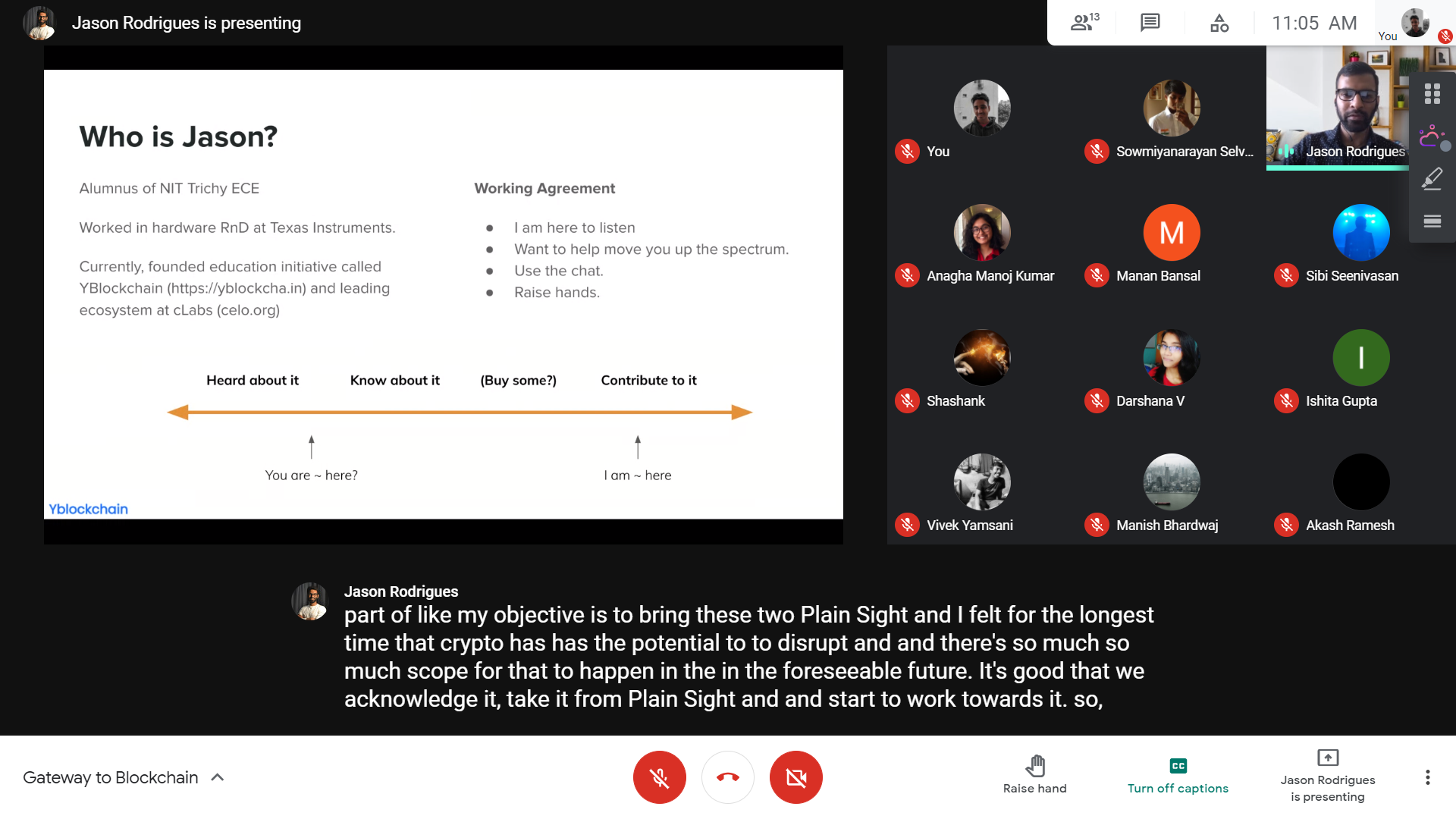Blog - Gateway to Blockchain
Planning an event, albeit online, is never an easy task. But having hosted an event myself, I thought it prudent to share my experiences. For brevity and specificity, here I am, sharing a very personalized version of our ‘Event Kit’.
Questions that need answering#
The first thing one must do when hosting an event is answer a couple of questions. The five W’s: What? Who? When? Where? Why?
Let me elaborate. What do you intend to do? Who are your guests and who is your target audience? When will you conduct the event? Where will you conduct the event? And, most importantly, why are you conducting this event?
Having recently hosted a webinar, my answer to these questions were:
- What: Conduct a webinar on the topic “Gateway to Blockchain”.
- Who: Our guest is going to be a speaker who is well versed in the topic at hand, and my audience will be anyone who wants to enter the blockchain space either from a learning or an investment standpoint. This includes people who are already part of our community, and their extended network.
- When: Considering the availability of our target audience and speaker, I chose a weekend morning, 2 weeks away.
- Where: Since the whole premise of a webinar is that it is held online, Google Meet seemed like the best option for us considering its Polling and Breakout Rooms features and the ease of use.
- Why: We wanted to spread the word and introduce more people to the world of Blockchain Technology.
Answering these questions laid the groundwork for planning and executing the event. With the important details chalked out, it was time to implement the plan.
Implementing the plan#
The first thing that I did was find the guest speaker. Fortunately, we had one of our YBlockchain mentors on board, and fixed a mutually convenient date and time for the event.
After that it was all about getting the word out to our target audience. There were 2 weeks to go for the event and the first thing we needed were some posters. An hour of time and a basic design later, we had a poster. Now you needed a blurb to let the audience know what’s happening. To get a rough count on how many people would be attending, we decided to share a registration link as well. When all of these were ready, all you had to do was send them out.
I went about publicizing the webinar in 3 main ways. The first was by emailing our network, the second by posting about it on our discord community and the third was by sharing it on social media platforms. I did this 7 to 10 days before the event. On D-3, I sent out reminders on our discord and re-shared the post on social media. D-1 was when we sent out the meeting link to the people who had registered and we also conducted a dry run of the webinar along with our speaker. An hour before the webinar was scheduled to happen, we sent another reminder to our discord community and shared the meeting link for anyone who wanted to join at the last minute.
The D-Day#

During the webinar, I played the role of a host/moderator and relayed any questions I found on the chat box to the speaker. It was a fun, interesting and light hearted session. The last thing we did was circulate a feedback form at the end of the webinar.
Conclusions#
Now, you’d assume that after we did all this, there’d be a really good turnout. Turns out, not a lot of people want to attend a webinar on a Sunday morning! Although, there may only have been 20-odd people who attended, the feedback we got from those 20 seemed very promising. At the end of the day, it served as a great learning experience for everyone involved in the process.
I’m excited at the prospect of hosting more of these events and correcting any mishaps this time around.